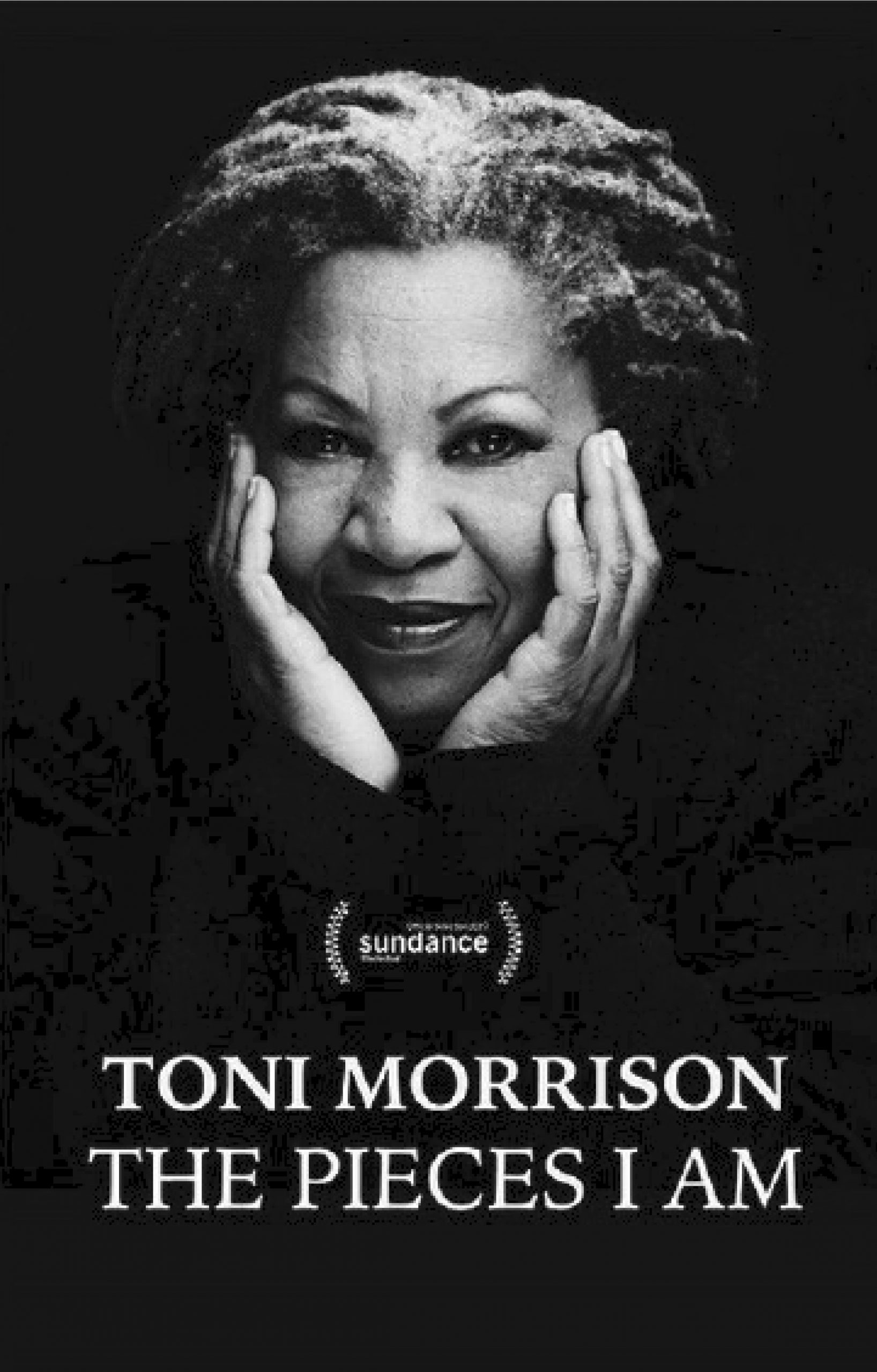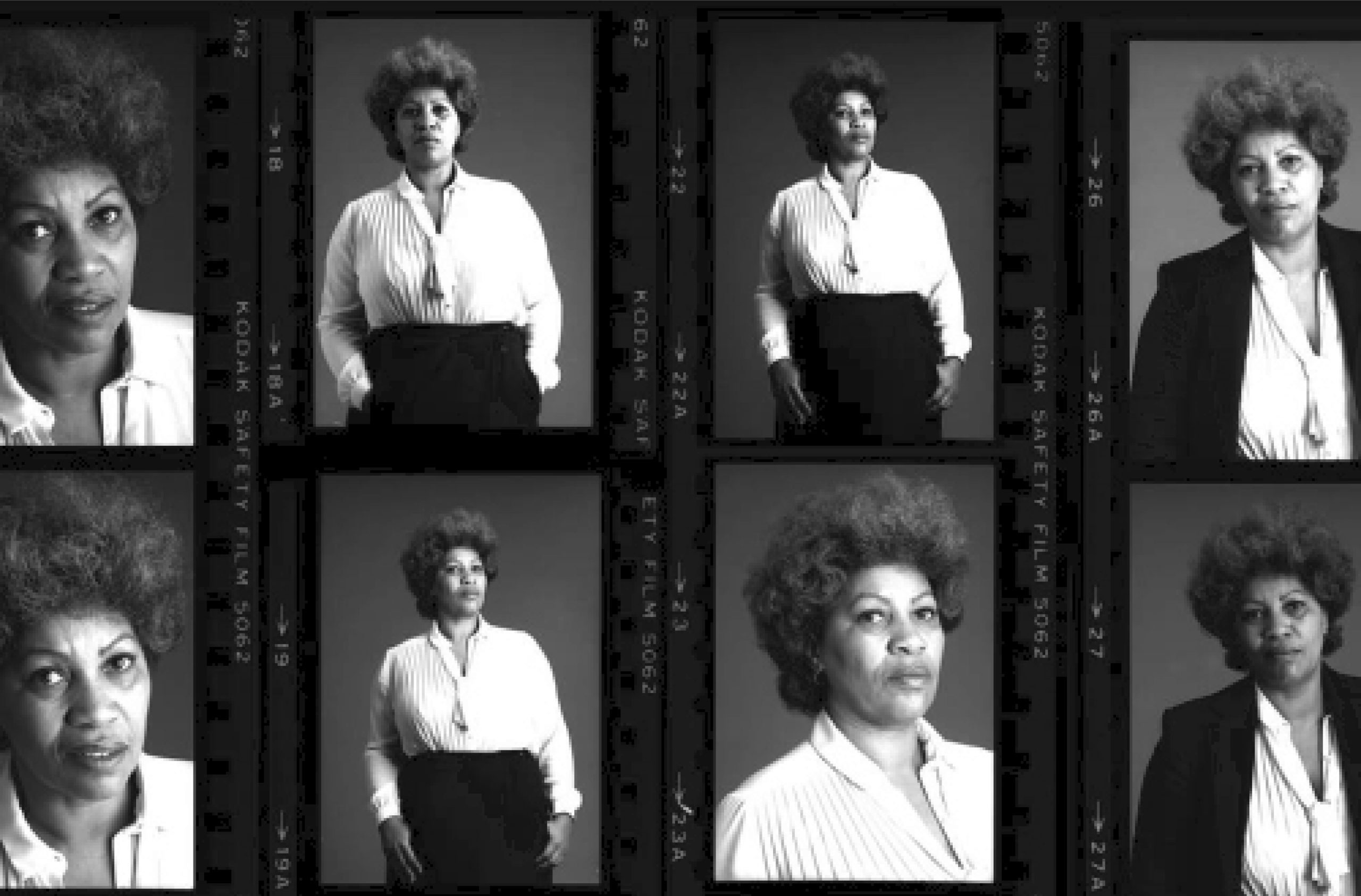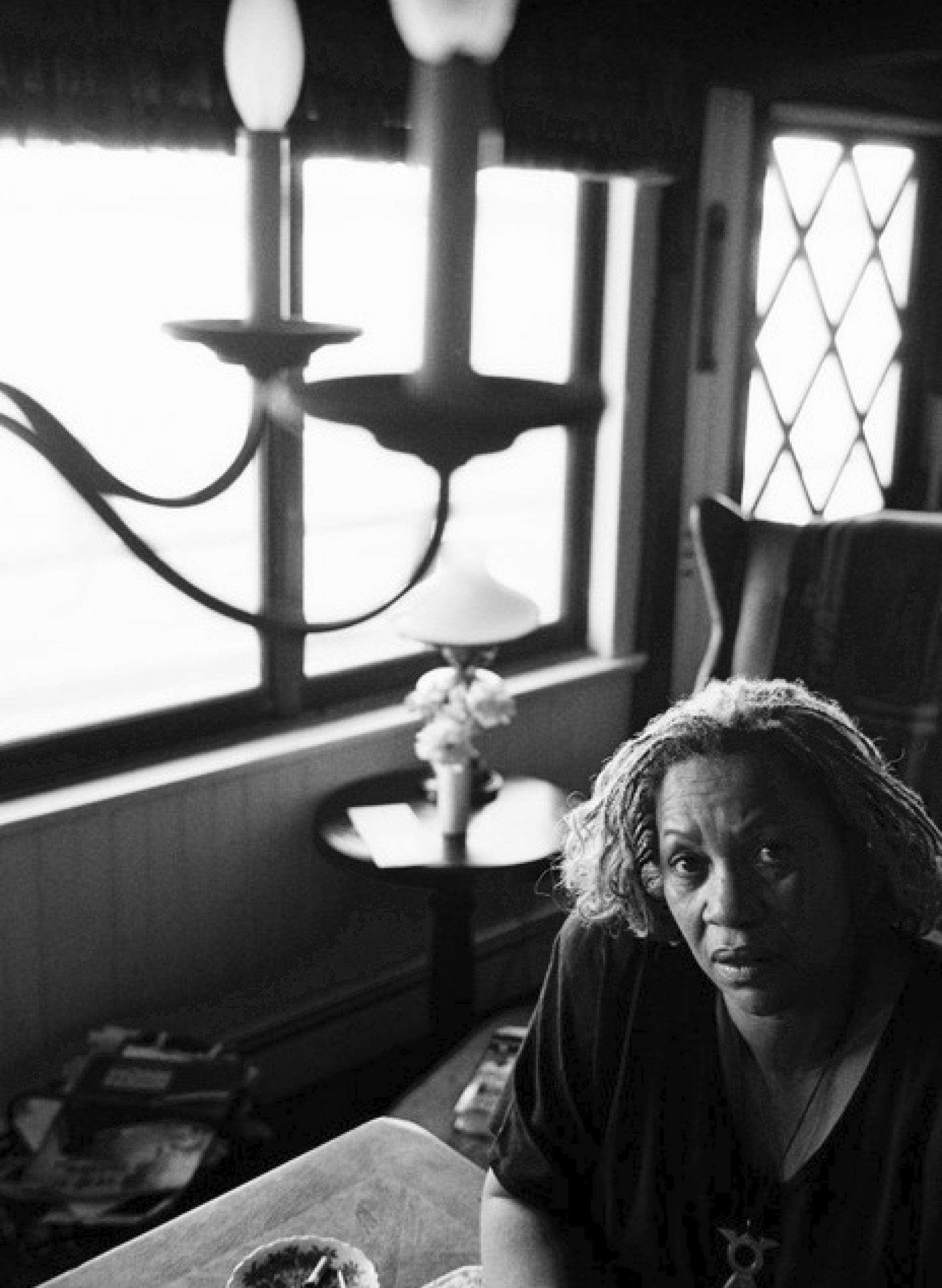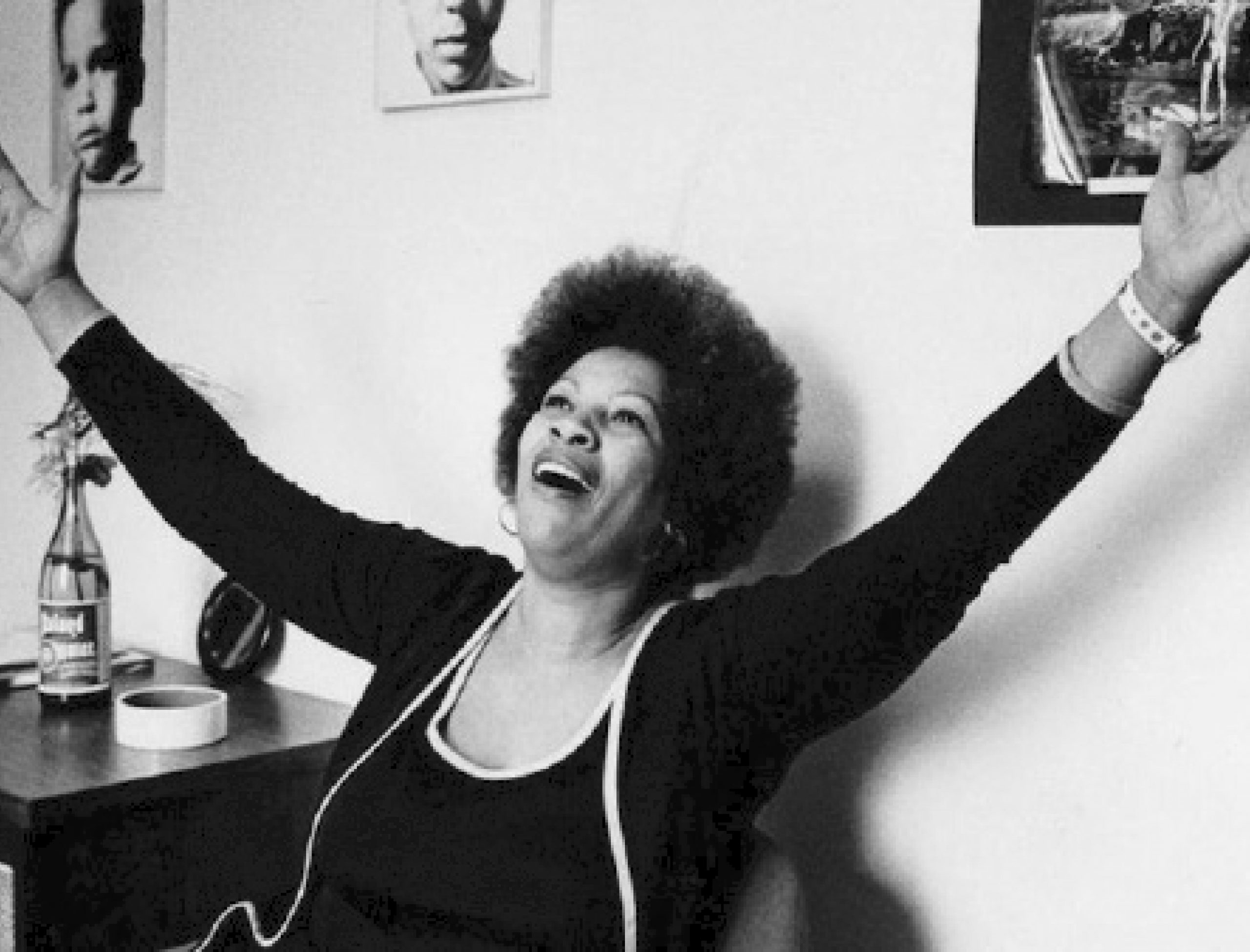Dadland Maye
 Two months before legendary writer Toni Morrison died on August 5, 2019, the documentary Toni Morrison: The Pieces I Am was released. After recently watching the film, I am left wondering, how could such an effortless production generate so many reviews in impressive mediums such as The New York Times, The Washington Post, The Wall Street Journal? Commonsense told me to look at the biography of the director to determine the extent of his clout in generating positive reviews in the influential press. There it was on his website that reads, “Timothy Greenfield-Sanders has achieved critical acclaim photographing world leaders and major cultural figures, including presidents, writers, artists, actors and musicians.”
Two months before legendary writer Toni Morrison died on August 5, 2019, the documentary Toni Morrison: The Pieces I Am was released. After recently watching the film, I am left wondering, how could such an effortless production generate so many reviews in impressive mediums such as The New York Times, The Washington Post, The Wall Street Journal? Commonsense told me to look at the biography of the director to determine the extent of his clout in generating positive reviews in the influential press. There it was on his website that reads, “Timothy Greenfield-Sanders has achieved critical acclaim photographing world leaders and major cultural figures, including presidents, writers, artists, actors and musicians.”
The content of what follows intrigues me even more, particularly the careful listing of works that highlight the director’s focus on marginalized populations. The website says, Greenfield-Sanders produced and directed 13 films including Lou Reed: Rock and Roll Heart (Grammy Award, 1998), The Black List (NAACP Spirit award, 2008), The Latino List, The Out List, About Face (HBO), The Boomer List, The Women’s List (PBS) and The Trans List (HBO). Of the thirteen films produced and directed, the website emphasizes the works that center on marginalized bodies. Greenfield-Sanders seems to be telling us that his hands are all in the right places at the right time in our diversity-visibility culture. Certainly, there is nothing unethical about this introductory and marketing dynamic with respect to the artist’s profile and ambitions. I, too, let people know who I am so that I can be seen as culturally and economically useful. Yet, this presentation of information also hints at Greenfield-Sanders’s ability to secure high profile projects and funding for his work—what is inaccessible to even more qualified female and male research specialists of the marginalized backgrounds he features.
As I theorize the scene behind the scenes that involve the production and distribution of the work on Morrison, a figure who resisted white privilege, I indeed take account of how Greenfield-Sander’s privilege as a white man dictates the production and reception of Toni Morrison: The Pieces I Am. Let me not waste time in loudly saying that regardless of identity, one should be able to produce a work that addresses any matter of ethnicity, gender, or sexuality. However, that mode of unrestricted production cannot escape interrogations of how the identity status of the producer shapes or limits the work’s conception, funding, production, circulation, and reception. Giving some consideration to how Greenfield-Sander’s white male privilege contributes to the film’s success, it is clear the director does an amazing job at circulating his creation. I would even bet that his powerful status gave him more access to our beloved Morrison and qualifies him to do the work.
At the same time, while it is admirable that Greenfield-Sanders centers marginalized populations in his portfolio, a problem arises when a figure’s fame rocks the boat on a particular work rather than the depth of his efforts. Suspecting this is what happened, I want to bluntly signal to readers that a proper film on Morrison is yet to be made. This message is highly important because we sabotage the goal of creating black historical archives if we fail to adequately critique a work because of the industry status of the filmmaker and his connection to reputable academics.
 On the matter of the expansion of the black archive, you should know that I watched the film at New York University’s Institute of African American Affairs—an academic center dedicated to interrogating and expanding archives that hold stories of black bodies. After the film was shown, the comments made to the director who sat on the stage were mostly glowing like the media reviews—but the comments provide little evidence of what made the film outstanding. Most of the persons in the room were black. The audience’s glorification of the film was a good show of black appreciation for someone doing work on a black god of literature. At the same time, it bothered me that the culture of politeness in a space seeking to examine and build this archive prevented everyone from stating that the documentary is astoundingly inadequate.
On the matter of the expansion of the black archive, you should know that I watched the film at New York University’s Institute of African American Affairs—an academic center dedicated to interrogating and expanding archives that hold stories of black bodies. After the film was shown, the comments made to the director who sat on the stage were mostly glowing like the media reviews—but the comments provide little evidence of what made the film outstanding. Most of the persons in the room were black. The audience’s glorification of the film was a good show of black appreciation for someone doing work on a black god of literature. At the same time, it bothered me that the culture of politeness in a space seeking to examine and build this archive prevented everyone from stating that the documentary is astoundingly inadequate.
I raised my hand and began by largely complimenting the film. I continued and noted that the film didn’t go far enough. I mentioned that much of the film was a patching together of videos clips that are accessible on YouTube. The shifting body language and eye rolls of some black folks in the room told me that my criticism was unwelcomed. The director maintained his coolness but his subtle unease with my comments was clear. As he defended his work, he later highlighted that the film had great art work and topnotch music. Immediately, I wondered whether I had said anything in an unproductive way. But after the event, my friends told me that I was respectful.
It became clearer to me that many persons do not value the role of academic spaces as sites to offer productive critiques that protest cultures of knowledge production. Many seem to forget that social justice advocates should not merely walk in the streets with placards that protest police brutality, environmental destruction, and gender inequalities. The violence of knowledge production should also be sites to target. Social justice figures should occupy these polite societies within the ivory towers with the armor of their inter-disciplinary frameworks and analyses that compliment but also challenge the conventions of politeness and high sensitivity to criticisms. Convinced of this need, I am using this space to say that a compelling film on Morrison remains to be made.
 Toni Morrison: The Pieces I Am manifests excellence in how the film conceives its marketing strategy to attract reviewers and draw an audience. Its star-studded cast includes Oprah Winfrey, top-ranked writers, Morrison’s friends, and outstanding academics and writers such as Angela Davis, Sonia Sanchez, Walter Mosely, Russell Banks, Farah Jasmine Griffin, Hilton Als, Richard Danielpour, Avery Willis Hoffman, and David Carrasco. Through these cast members, we can count on two hands the number of new things you will learn about Morrison. Oprah, for instance, reveals that after reading Beloved, she was so moved that she called the fire department in Morrison’s home town, got Morrison’s private number, telephoned Morrison, and proposed making a film on the book. Expect to learn from Fran Lebowitz that Morrison enjoyed receiving gifts and being in festive environments. You will see the lake and the sunrise Morrison wakes to each morning so that she can write. At some point, you will discover how Morrison approached her boss at Random House and demanded her salary be increased to that of her white male colleagues. You will smile and learn about how Morrison makes the best carrot cakes. Then there is the revelation that Morrison’s father forbade white people from entering his home because he suspected they lacked the ability to change from their violent ways. And how will you not notice the nice photos of Morrison’s childhood including those in which she was the only black face in her school?
Toni Morrison: The Pieces I Am manifests excellence in how the film conceives its marketing strategy to attract reviewers and draw an audience. Its star-studded cast includes Oprah Winfrey, top-ranked writers, Morrison’s friends, and outstanding academics and writers such as Angela Davis, Sonia Sanchez, Walter Mosely, Russell Banks, Farah Jasmine Griffin, Hilton Als, Richard Danielpour, Avery Willis Hoffman, and David Carrasco. Through these cast members, we can count on two hands the number of new things you will learn about Morrison. Oprah, for instance, reveals that after reading Beloved, she was so moved that she called the fire department in Morrison’s home town, got Morrison’s private number, telephoned Morrison, and proposed making a film on the book. Expect to learn from Fran Lebowitz that Morrison enjoyed receiving gifts and being in festive environments. You will see the lake and the sunrise Morrison wakes to each morning so that she can write. At some point, you will discover how Morrison approached her boss at Random House and demanded her salary be increased to that of her white male colleagues. You will smile and learn about how Morrison makes the best carrot cakes. Then there is the revelation that Morrison’s father forbade white people from entering his home because he suspected they lacked the ability to change from their violent ways. And how will you not notice the nice photos of Morrison’s childhood including those in which she was the only black face in her school?
But how did Morrison feel being in those white spaces so early in her life while living with a father who resented whiteness? You will not hear anything about that. Or how did Morrison deal with stress from her children and her other family members? At what point in her life was she deeply worried about the opinions of white people and even people of color as she sought to challenge literary norms in her work? How did she cope with possible feelings of insecurity? Why was Morrison never interested in writing her own autobiography? Why has she donated all her papers to Princeton and none to a HBCU or even to Schomburg Center for Research in Black Culture considering her educational background at an HBCU and her emphasis on black people owning and controlling the narratives of their lives? Moreover, while there is a brief note on how Morrison had it all figured out in raising her children, there is not a word on the costs Morrison’s family faced as her writing attended to nurturing African Americans. In fact, in an interview with the Telegraph in 2012, Morrison referred to her role as a single mother in a way that is not at all glowing. “I don’t think I did any of that very well,” Morrison said, “I did it ad hoc, like any working mother does.” As we all know, Morrison’s son Slade died two years earlier of cancer.
The themes the film addresses are things Morrison’s fans and anybody with YouTube access could easily dig up: Morrison was curious from an early age about the racialized dynamics around her. Her job at Random house allowed her to publish other black writers including biographies of Angela Davis and Mohammed Ali. Morrison found it odd that her grandfather bragged about reading the bible five times but later realized that it was due to his generation being forbidden from reading. Morrison didn’t care one damn about the white gaze as she composed her novels. Morrison received the recognition she deserved after literary figures protested the racist practices of prize-giving associations.
 Greenfield-Sanders said it took him five years to make the film. We see the length of the investment in the careful selection of the fine music and top-notch artwork that made the film most suitable for an audience older than forty. A younger generation that has engaged Morrison’s work in high school curriculums, for instance, will undoubtedly need some strong coffee to get through this film because the cinematography seems old fashioned, unexciting, and uninterested in engaging a younger age group. Though clearly appealing to Morrison’s fans, the filmmaker does not seem to consider that Morrison’s fans would have already seen the film by digging in their memories and patching together YouTube-video clips they watched repeatedly years ago. A simple review of interviews Charlie Rose did with Morrison is a place to start. What, then, has this targeted Morrison-audience learned about Morrison? That is the big question that will touch many persons who have watched the film and are unnerved by my frank assessment. What did you learn that you justified your taking time to sit in a room for an hour and a half with strangers?
Greenfield-Sanders said it took him five years to make the film. We see the length of the investment in the careful selection of the fine music and top-notch artwork that made the film most suitable for an audience older than forty. A younger generation that has engaged Morrison’s work in high school curriculums, for instance, will undoubtedly need some strong coffee to get through this film because the cinematography seems old fashioned, unexciting, and uninterested in engaging a younger age group. Though clearly appealing to Morrison’s fans, the filmmaker does not seem to consider that Morrison’s fans would have already seen the film by digging in their memories and patching together YouTube-video clips they watched repeatedly years ago. A simple review of interviews Charlie Rose did with Morrison is a place to start. What, then, has this targeted Morrison-audience learned about Morrison? That is the big question that will touch many persons who have watched the film and are unnerved by my frank assessment. What did you learn that you justified your taking time to sit in a room for an hour and a half with strangers?
Toni Morrison: The Pieces I Am is more like a eulogy that portrays Morrison as an author-god—one who knew from day-one that she was better than insecure white men, a black woman who just stepped up to her white male boss at Random house in the 70s and told him strongly that she needed to get the same salary as white men, a genius whose books all ignored the white gaze although all her books, except for one, were edited by Robert Gottlieb, a white man. The eulogy also failed to demonstrate how Morrison benefitted from, not merely supervised, a vibrant literary tradition of African, African-American, and Caribbean writers. Instead, an over energized cast-member identified Morrison as the Shakespeare of her time. But “Morrison is Shakespeare pedestrian,” the brilliant Walter Mosely emphasized. But notice that while this renowned black writer imagines Morrison as an author-god, he cannot help but recognize that Morrison is only the god of the streets, because the sophisticated towers are already occupied by Shakespeare. In that, Mosely inadvertently theorizes the excellence of every black writer—including himself, I suppose—as incapable of rising above the rugged streets already departed by whiteness.
The film’s author-god framework indeed expands problematic conventions that solely center positive portrayals of the individual as the ultimate category of analysis. It raises the broad questions of who should films serve: Author-gods or Diasporic communities and wider cultures that benefit from comprehensive accounts that inform how they construct their futures? Morrison’s corpus demonstrates a deep resistance to this omni-powerful artistic construct; thus, it is reasonable to suspect that the film perhaps does more damage rather than good to her legacy. The popularity of the film will restrict the ability of lesser known and more qualified Morrison experts to secure funding to make a more critical film. Possible funders will say—Oh, Greenfield-Sanders already made that film you are proposing! Rather than expand the black archive on Morrison, Greenfield-Sanders’s name will, therefore, become the black archive. Moreover, the positively wide reception this inadequate film has generated discourages artists from producing critical diasporic works as it concertizes kiss-ass cultures that have for so long vibrated the pulse of academic norms.